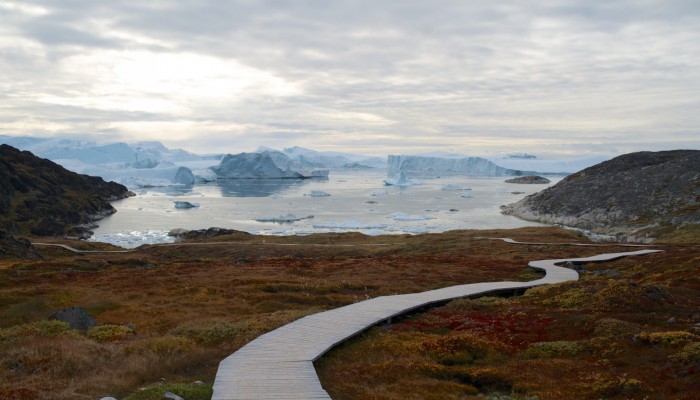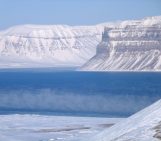
If lucky enough to visit Ilulissat Icefjord, you’d find yourself in a truly ancient landscape. From the up to 3.9 billion year old Precambrian rocks, to ice dating back to the Quaternary Ice Age (2.6 thousand years old) and archaeological remains which evidence the past settlement of this remote Greenlandic outpost, it’s no surprise this stunning location has been declared a UNESCO world heritage site.
Today’s Imaggeo on Mondays photograph was taken by Camille Clerc, at Sermermiut, an old inuit settlement at the mouth of the Ilulissat Icefjord. Located 1,000 km up the west coast of Greenland, in the Bay of Disko Bugt, 250 km inside the Arctic Circle, the icefjord is the sea mouth of Jakobshavn Glacier – one of the few glaciers on Greenland which reaches the sea. Confined either side by ancient Precambrian rocks, the icefjord forms a narrow, 3-6 km wide tidewater ice-stream, where vast amounts of meltwater and ice from the Greenland ice-sheet reach the sea.
Jakobshavn (also known as Sermeq Kujalleq) is Greenland’s fastest moving glacier. Huge chunks of ice break off the glacier front via Ilulissat Icefjord in a process known as glacier calving. Annually, over 35 km3 of ice is calved into the sea; equivalent to 10% of the production of all Greenland calf ice and more than any other glacier outside Antarctica! As a result, there is an almost constant production of icebergs, which vary in size from small lumps to bergs which can exceed 100m height. As they make their way towards the sea, the icebergs actively erode the fjord bed, slowly changing its morphology over time.
The tragic sinking of the Titanic on its maiden voyage, as a result of a collision with an iceberg on the night of the 15th April 1912, is part of modern history and was even portrayed in a Hollywood blockbuster. Could one of the mighty icebergs calved from Jakobshavn via Ilulissat Icefjord, be the culprit of the sinking of the White Star Line vessel? Pinpointing the exact location from which the glacier was calved is tricky. Most icebergs found in North Atlantic waters originate from the western coast of Greenland. They are pushed slowly towards more northerly latitudes by the West Greenland Current and then forced towards the Atlantic, hugging the coast of Canada, by the Labrador Current, eventually making their way to the Gulf Stream, along one of the world’s busiest shipping routes. The journey there is long and more often than not, the icebergs take such battering during the voyage that their original size is much diminished.
Imaggeo is the EGU’s online open access geosciences image repository. All geoscientists (and others) can submit their photographs and videos to this repository and, since it is open access, these images can be used for free by scientists for their presentations or publications, by educators and the general public, and some images can even be used freely for commercial purposes. Photographers also retain full rights of use, as Imaggeo images are licensed and distributed by the EGU under a Creative Commons licence. Submit your photos at http://imaggeo.egu.eu/upload/.



